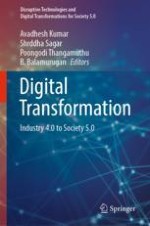This book focuses on computing for Industry 4.0 illustrating different domains with the purpose of integration with existing domains for automation of processes. It gives readers an idea about the various challenges and design structure for computing of Industry 4.0. The contents include contributions from experts in Cyber-Physical Systems (CPS), the Internet of Things (IoT), Industrial Internet of Things (IIoT), cloud computing, cognitive computing, and artificial intelligence across the world, contributing their knowledge to identify the different characteristics of the above domains.
